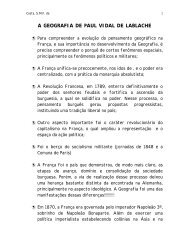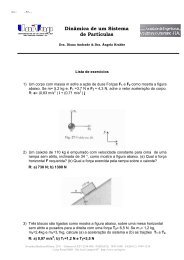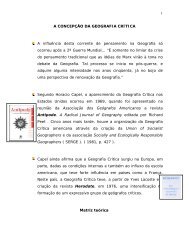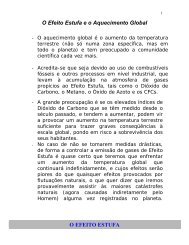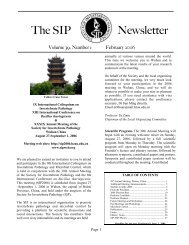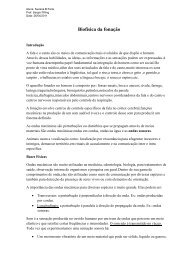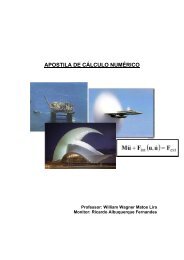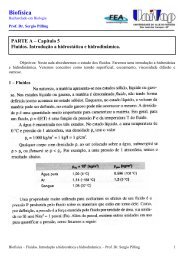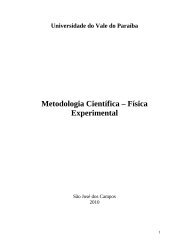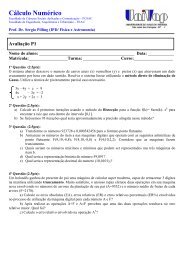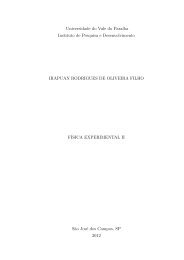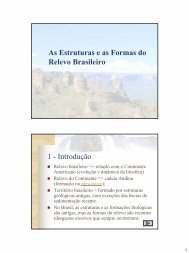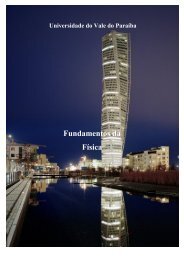F0007 - Phylum Zygomycota and the new classification - Univap
F0007 - Phylum Zygomycota and the new classification - Univap
F0007 - Phylum Zygomycota and the new classification - Univap
Create successful ePaper yourself
Turn your PDF publications into a flip-book with our unique Google optimized e-Paper software.
Entomophthora muscaeOrdem Entomophthorales• Primary conidia germinate directlyto form hyphae, or indirectly toform secondary conidia:• Passively dispersed secondaryconidia produced on long, thinconidiophores; with sticky apicalstructure called a haptor at <strong>the</strong>conidium spex.• Forcibly discharged secondaryconidia with mechanism similar toprimary conidia<strong>Zygomycota</strong> DENR 85From O’Donnell, 1979<strong>Zygomycota</strong> DENR 86Ordem EntomophthoralesFamília Neozygitaceae(image from Bioimages)<strong>Zygomycota</strong> DENR 87Entomophthora muscae• Obligate pathogens of insects, especiallyHomoptera, <strong>and</strong> mites• Neozygites– Primary conidia discharged by papillareversion, germinate to form passivelydispersed secondary conidia with haptor onlong thin conidiophores– Resting spores dark, ornamented, with twopores; formed inside host<strong>Zygomycota</strong> DENR 88NeozygitesResting spores inthrips bodyResting sporegerminating toproduce conidiumResting spores;note two poreswhere gametangiawere attachedPrimary conidiagerminate to formpassively disperspedconidium with stickyhaptor (arrow)Ordem Mortierellales• 10% of known zygomycetes (~100 spp.)• Characterized by thin, delicate,“arachnoid-like” mycelium, zonatecolonies <strong>and</strong> garlic-like odor• Sporangiophores ei<strong>the</strong>r acolumellate, orwith rudimentary columella• Often form chlamydospores<strong>Zygomycota</strong> DENR 89<strong>Zygomycota</strong> DENR 9015



